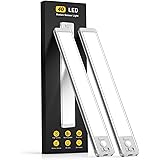Struggling to Keep Your Workshop Organized and Your Hand Tools Accessible?
Do you ever find yourself endlessly searching for the right wrench or screwdriver, only to discover it buried under a pile of sawdust and other tools? Answering this common workshop dilemma, the video above showcases an ingenious DIY French cleat hand tool storage system. This modular approach to organization transforms chaotic workspaces into highly efficient, visually appealing areas, ensuring every tool has its place and is always within reach. The beauty of a French cleat system lies in its unparalleled versatility, allowing you to customize and rearrange your storage solutions as your tool collection grows and evolves.
Unlocking the Power of French Cleat Systems for Hand Tool Organization
A French cleat system is not just about hanging tools on a wall; it is a fundamental shift in how you interact with your workshop. This design involves mounting a series of wooden strips, cut at a 45-degree angle, to your wall. Corresponding cleats are then attached to the back of custom-built tool holders. The angled cuts allow the holders to securely interlock with the wall cleats, creating a robust yet incredibly flexible storage solution. While the video specifically demonstrates a custom DIY hand tool storage system, its principles apply broadly, making it an excellent choice for any workshop or garage.
Consider the core advantages that make this system a favorite among DIY enthusiasts and seasoned woodworkers alike. Firstly, exceptional visibility is achieved. Unlike drawers or closed cabinets, a French cleat system proudly displays your tools, eliminating the need to rummage through cluttered spaces. Secondly, accessibility dramatically improves. With each tool having its designated spot, grabbing the correct item becomes a seamless motion, saving valuable time during projects. Moreover, this modular setup facilitates effortless rearrangement. Tool holders can be shifted, added, or removed in seconds, allowing your storage to adapt dynamically to your changing needs without rebuilding entire sections.
Strategic Design for Common Hand Tools: Beyond the Basics
The video provides an excellent starting point for various hand tool holders, demonstrating how practical designs can emerge from simple ideas. Expanding on these concepts, let’s delve deeper into how you can create effective storage for some of your most used hand tools, emphasizing functionality and space-saving techniques.
Smart Storage for Wrenches and Sockets
As highlighted in the video, organizing wrenches and sockets on dowel rods is an incredibly efficient method, particularly for those with varying sets. For instance, using separate dowel rods for standard and metric sets helps maintain order. When designing these holders, consider the unique requirements of your tools. While storing sockets diagonally, as shown, maximizes space, many users might prefer displaying them upright. This orientation allows for easy readability of socket sizes, which is crucial for quick identification during a project. A simple ledge built into the holder can elevate the sockets, providing that necessary visibility. Additionally, don’t overlook specialized items like reducers, swivel sockets, or even smaller ratchets; a dedicated holster or a slightly larger dowel rod can keep these handy accessories from getting lost.
When implementing dowel rods, the video’s tip about drilling holes at a 10-degree angle is a subtle but impactful detail. This slight angle provides added security, preventing tools from accidentally slipping off, especially if your workshop experiences vibrations. Achieving this angle precisely, perhaps with a simple jig on a drill press, ensures consistency across all your holders. You could also implement a system for labeling the size of each wrench or socket on the holder itself, ensuring that tools are returned to their correct positions every time.
Precision Holders for Drill Bits and Paddle Bits
Drill bits, especially paddle bits, present a unique challenge due to their varying shaft diameters. The video cleverly demonstrates this by noting that a 5/16-inch paddle bit shaft requires a 5/16-inch hole, whereas a 1/4-inch shaft needs a corresponding 1/4-inch hole. This attention to detail is paramount to prevent smaller bits from slipping through. For bits with differing shaft and cutting diameters, like the 1/4-inch bit mentioned, drilling a hole that matches the narrower shaft and storing the bit upside down is an elegant solution.
Expanding on this, consider dedicated holders for other types of drill bits. Brad point bits, Forstner bits, and even common twist drill bits can benefit from custom-drilled slots or small shelves that keep them organized by size. Ensuring snug fits not only prevents bits from falling out but also protects their sharp edges from dulling through contact with other tools. A clear visual layout of your bits can significantly speed up project setup times.
Custom Slots for Screwdrivers and Pliers
Screwdrivers, with their diverse handle shapes and shaft lengths, benefit greatly from individual slots. This simple design, as seen in the video, keeps them separated and prevents the handles from tangling. When creating these slots, consider making them slightly wider than the screwdriver shaft but narrow enough to grip the handle, allowing for easy insertion and removal. You might even design slots at varying depths or angles to accommodate different screwdriver types, such as short stubby drivers or long-reach flatheads.
For pliers and other grip tools, the 5/8-inch dowel rod concept demonstrated can be easily adapted. Simply sandwiching a dowel rod between two scrap pieces with a precisely drilled hole creates a sturdy holster. This basic design can be customized for different plier types: needle-nose pliers, channel locks, or vice grips. For larger or unusually shaped gripping tools, a simple U-shaped cradle or a robust hook might offer a more secure and accessible storage solution. The key is to design each holder with the specific tool’s dimensions and typical usage in mind.
Building Smart: Materials, Techniques, and Expansion
One of the most appealing aspects of the featured DIY French cleat system is its cost-effectiveness, largely achieved through the use of scrap materials. This not only minimizes expenses but also promotes sustainability in your workshop.
Maximizing Value with Scrap Materials
The entire system presented in the video was built using scrap wood, proving that effective organization doesn’t require expensive materials. Common materials like plywood, MDF, or even solid wood scraps can be repurposed for cleats and tool holders. When selecting scraps, prioritize pieces that are relatively flat and free of major defects to ensure structural integrity and a clean finish. Using readily available materials makes this project accessible to nearly any DIY enthusiast, regardless of budget constraints.
Beyond the cost savings, working with scrap pieces encourages creative problem-solving and minimizes waste. It’s an excellent way to use up those leftover bits from previous projects, turning potential landfill fodder into valuable workshop infrastructure. Always ensure the chosen wood is robust enough to support the weight of the tools it will hold.
Refining Your Drilling and Cutting Techniques
Accuracy in cutting the 45-degree angle for the cleats is paramount for a secure system. A miter saw or table saw with the blade tilted to 45 degrees provides the most consistent results. For drilling holes, especially at an angle, a drill press offers superior precision and repeatability. As the video details, a simple jig created from two scrap pieces cut at a 10-degree angle can facilitate consistent angled holes on a drill press. If a drill press is unavailable, a hand drill with an angle guide or a careful eye can still achieve decent results, though consistency may vary.
Remember that the shaft sizes of drill bits vary, and matching the drill bit to the tool’s shaft ensures a snug, secure fit. As demonstrated with the paddle bits, even a fraction of an inch can make a significant difference in how effectively a tool is held. Taking precise measurements and performing test drills on scrap pieces can prevent errors and wasted materials.
Designing for Future Expansion and Modularity
The beauty of a French cleat system is its inherent modularity. The creator mentions having “more space to build on,” highlighting the system’s scalability. As your tool collection grows, you can easily add more wall cleats or custom holders without having to overhaul your entire setup. This future-proofing aspect is invaluable for any workshop, allowing your storage to evolve alongside your projects and skill set.
Consider dedicating specific sections of your French cleat wall to different categories of hand tools, such as measuring tools, cutting tools, or fastening tools. This logical arrangement can further enhance efficiency and make locating specific items even faster. The ability to rearrange holders also means you can optimize your workflow by placing frequently used tools closer to your primary workbench or project area, creating a truly ergonomic workspace.
Creating a Functional and Organized Workshop Environment
Adopting a DIY French cleat system for your hand tool storage offers more than just a place to hang tools; it represents an investment in a more efficient, productive, and enjoyable workshop experience. From ensuring the perfect fit for each tool with specific drill sizes, like the 5/16-inch for larger paddle bits, to the secure 10-degree angle for dowel rod placement, every detail contributes to a superior organizational system. This method encourages thoughtful design, maximizes the utility of scrap materials, and provides a flexible framework that can adapt to your evolving needs, transforming cluttered spaces into highly functional command centers for all your DIY endeavors.










